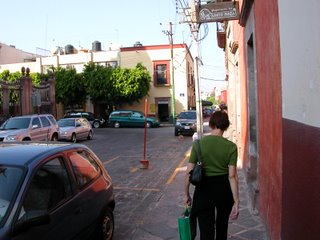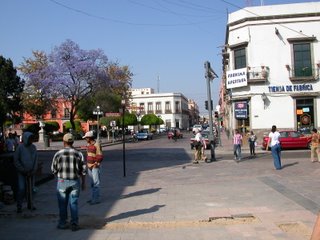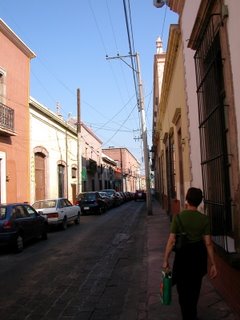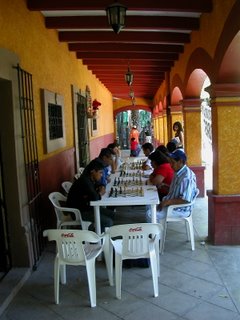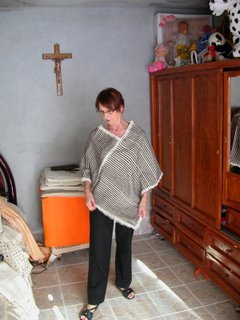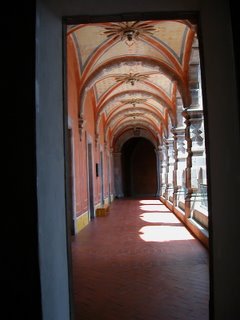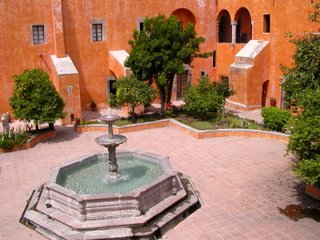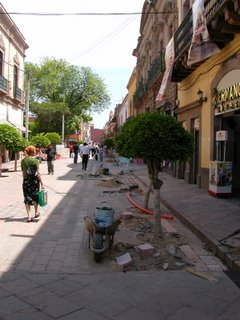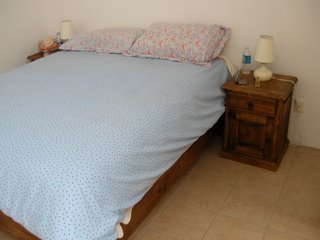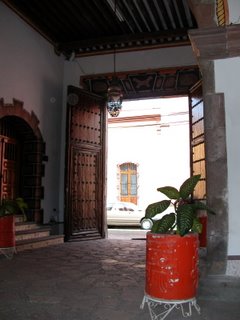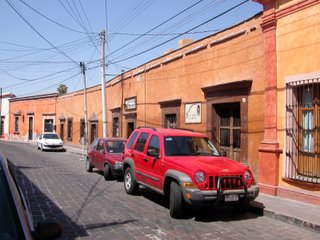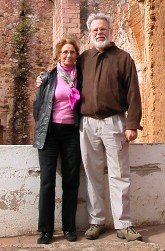
The Leyendas de Querétaro leads a tour of the historic district with actors playing the roles of people who live in the houses being visited. This was a free show to get the word out to the public.
The guitar festival is organized by Abel Garcia, a guitar maker from Paracho (the guitar and stringed instrument center near Lake Patzcuaro started by Bishop Quiroga in the early 1500s). Garcia is trying to improve the quality of Mexican guitars and as part of that he has organized the festival for the past several years and has experimented with various woods and combinations of woods for guitars to study their sound qualities. They go for $7,000-$10,000 US in the United States. Part of this year’s festival was a display and concert with 12 guitars he made for his experiments. They are beautiful and sound great to our untrained ears.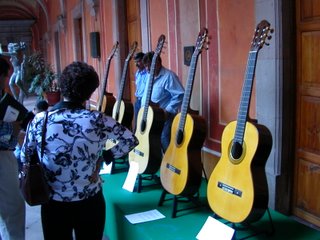
Some Paracho guitars. I missed getting a photo of the 12 Garcia guitars.
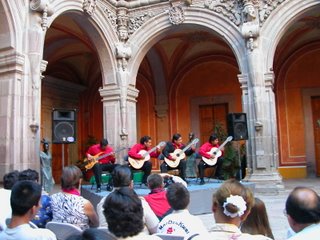
Las Guitarres de las Americas. The only concert in the courtyard.
Since we had met one of the performers at Shelley’s pre-St. Patrick’s day party, we made sure to go to his concert which was held in a barrel-vaulted room of the museum with some nifty nineteenth-century art and great acoustics. His was the first concert, and we ended up going to nearly all the others. Of course, those were the free concerts. The for-pay concerts were at the Teatro de la Republica, and we missed those; and apparently they were poorly attended. This is a shame, since what Garcia is doing is really rather extraordinary.
If you are into guitars, you may someday hear of Fabián Sanchez. He has only studied guitar for 18 months, and he made some of the professionals sound poor by comparison. Garcia admits that Sanchez is better than he is, and he has been playing for 20-30 years. It must be disheartening for the other students at the university who have spent the past 4-6 years studying just to become merely good.

Fabian Sanchez in concert.
Every town should have a local Russian string quartet like the one that played at the Museo de la Zacatecana. It was billed as a baroque and jazz combination, but the jazz was more along the lines of Armstrong and Gershwin. The venue was the museum courtyard, and it was very intimate; and the quartet was superb. The players live in Querétaro, and their Spanish had a definite Russian accent, but it was slow and clear and I could understand it which is what matters. Later, we went for a drink with Carl and Francis. All in all, a very pleasant evening.
BTW, the Museo de la Zacatecana has a history, like most things in Querétaro. In the early nineteenth century, la Zacatecana (the lady from Zacatecas) killed her husband, buried him in the courtyard with the help of her lover, and then killed her lover and buried him alongside the husband. No one found out about it until after her death when the skeletons were found during some renovation. There had been rumors after her husband disappeared, but nothing definite. Anyway, Carl and Francis had seats on the glass floor over the burials with a prefect view of them during the concert.
Last weekend we also went to Celaya, an hour or so west of town, to look for paper maché which Celaya is supposed to be known for. I was hoping to find a chess set like they used to sell in Mexico City with little Sancho Panzas for pawns, etc. We brought along Carl and Francis to give them a break from Querétaro since they don’t have a car. After missing the road signs on the highway for the Celaya exit we nearly went to Salamanca before we found a way to turn around without paying a toll again. Turns out they are working on the highway and have removed all of the exit signs for Celaya.
It took an hour or two to finally find any paper maché at all, and that was at a little artesanía shop, perhaps the only one in Celaya. Celaya is definitely not a tourist town and relies on manufacturing. All the paper maché they make is sold in places like Querétaro. But at least we now know that it’s not a place to send people for paper maché. I ended up buying a carved wood chess set at a little shop in Querétaro.
Tomorrow, March 30, we are leaving for Yucatan and Quintana Roo. We expect to spend tomorrow evening in Cholula, Puebla, to visit Lupe and Ricardo (he is the nephew of the Capitan), and to visit the old alma mater. Then on to the coast of Veracruz, over to Chetumal, and up to Puerto Morelos where Lilia and her partner Israel have their cultural resource management business, Empresa del Manejo Cultural, S.A., or EMCSA. They are, as far as anyone knows, the only private CRM firm in Mexico, and they have just finished a major project (http://www.emcsa.net/proyectos.htm). With luck we will be able to stay at Lilia’s house in Mérida before heading back to Querétaro. Lilia and Israel were at the conference in Morelia last September, and Lilia gave a talk at the ACRA conference I organized in DC last November. They are young and bright, and willing to listen to an old fogey like me (just shows how smart they are!).
Caroline is expected to visit us between April 12-18, and then we will make a brief visit to the DF to visit some folks at INAH and the University before heading back to Altanta for a month. Since we have had nothing but trouble from the Ga. Dept of Motor Vehicles and from our doctors for our medical records, etc., we will also need to get a lot of paper work straightened out, including our visas, and a new car that can survive the speed bumps (topes) down here. A Camry just does not cut it on some of the topes, and I really do not want to take it on dirt roads, which are sometimes unavoidable if you want to do something interesting.


